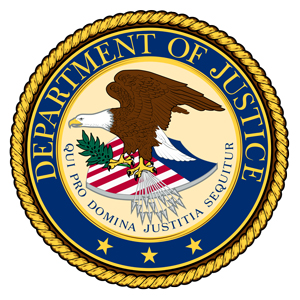Settlement Will Cut Flaring at Plants in Texas
March 9, 2022 - Chevron Phillips Chemical Company LP has agreed to make upgrades and perform compliance measures estimated to cost $118 million to resolve allegations that it violated the Clean Air Act and  state air pollution control laws at three petrochemical manufacturing facilities located in Cedar Bayou, Port Arthur, and Sweeney, Texas. Chevron Phillips will also pay a $3.4 million civil penalty. The settlement will eliminate thousands of tons of air pollution from flares.
state air pollution control laws at three petrochemical manufacturing facilities located in Cedar Bayou, Port Arthur, and Sweeney, Texas. Chevron Phillips will also pay a $3.4 million civil penalty. The settlement will eliminate thousands of tons of air pollution from flares.
According to the complaint filed with a consent decree, the company failed to properly operate and monitor its industrial flares, which resulted in excess emissions of harmful air pollution at the three Texas facilities. The company regularly “oversteamed” the flares and failed to comply with other key operating constraints to ensure the volatile organic compounds (VOCs) and hazardous air pollutants (HAPs) contained in the gases routed to the flares are efficiently combusted.
“The Justice Department and EPA will enforce the law against petrochemical plants that violate the Clean Air Act,” said Assistant Attorney General Todd Kim for the Justice Department’s Environment and Natural Resources Division. “We are committed to reducing harmful air pollution from unnecessary and improper flaring, especially near overburdened communities with environmental justice concerns.”
“This settlement will require Chevron Phillips to install pollution control and emissions monitoring equipment at three facilities in Texas, reducing emissions of greenhouse gases and other harmful gases by thousands of tons per year,” said Acting Assistant Administrator Larry Starfield for the EPA’s Office of Enforcement and Compliance Assurance. “Those controls, plus a requirement for fence line monitoring of benzene emissions and corrective actions when benzene readings are high, will result in significant benefits for the local communities in Texas.”
Once fully implemented, the pollution controls are estimated to reduce emissions of climate-change-causing greenhouse gases, including carbon dioxide, methane and ethane, by over 75,000 tons per year. The settlement is also expected to reduce emissions of ozone-forming VOCs by 1,528 tons per year and of toxic air pollutants, including benzene, by 158 tons per year.
The pollutants addressed by the settlement can cause significant harm to public health. VOCs are a key component in the formation of smog or ground-level ozone, a pollutant that irritates the lungs, exacerbates diseases such as asthma, and can increase susceptibility to respiratory illnesses, such as pneumonia and bronchitis. Chronic exposure to benzene, which EPA classifies as a carcinogen, can cause numerous health impacts, including leukemia and adverse reproductive effects in women.
Flares are also often large sources of greenhouse gas emissions. Flares are devices used to combust waste gases that would otherwise be released into the atmosphere during certain industrial operations. Well-operated flares should have high “combustion efficiency,” meaning they combust nearly all harmful waste gas constituents, like VOCs and HAPs, and turn them into water and carbon dioxide. The agreement is designed to improve Chevron Phillips’s flaring practices. First, it requires the company to minimize the amount of waste gas that is sent to the flares, which reduces the amount of flaring. Second, the company must improve the combustion efficiency of its flares when flaring is necessary.
Chevron Phillips will take several steps to minimize the waste gas sent to its flares at each facility. At the Cedar Bayou facility, Chevron Phillips will operate a flare gas recovery system that recovers and “recycles” the gases instead of sending them to be combusted in a flare. The flare gas recovery system will allow Chevron Phillips to reuse these gases as a fuel at its facilities or a product for sale. At the Port Arthur and Sweeny facilities, Chevron Phillips will be required to amend its air quality permits to limit the flow of gas at selected flares. Chevron Phillips will also create waste minimization plans for each facility to further reduce flaring. For flaring that must occur, the agreement requires that Chevron Phillips install and operate instruments and monitoring systems to ensure that the gases sent to its flares are efficiently combusted.
Chevron Phillips will also perform air quality monitoring that is designed to detect the presence of benzene at the fence lines of the three covered plants. Monitoring results must be publicly posted, providing the neighboring communities with more information about their air quality. The monitoring requirements also include triggers for root cause analysis and corrective actions if fence line emissions exceed certain thresholds. Flare compliance is an ongoing priority for EPA under its Creating Clean Air for Communities National Compliance Initiative.
The consent decree, lodged in the Southern District Court of Texas, is subject to a 30-day public comment period and final court approval. The consent decree will be available for viewing at https://www.justice.gov/enrd/consent-decrees.
Source: DOJ Release








